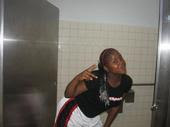CSU Dominguez Hills
Travel back in time and read California State University, Dominguez Hills' history.April 29, 1960: Governor Pat Brown signs bill for state college to be known as South Bay State College.January 19, 1962: Newly formed CSC Board of Trustees appoints Dr. Leo F. Cain president of South Bay State College.July 2, 1962: First meeting of President Cain’s planning staff. Chief priority: select college site.July 12, 1962: Trustees rename South Bay State as California State College at Palos Verdes (CSCPV).December 8, 1962: Trustees decide CSCPV library will open with 50,000 volumes.June 7, 1963: Trustees put CSCPV on year-round quarter system.January 1964: Trustees approve CSCPV curricular plan with dual-major, interdisciplinary studies approach.May 6, 1964: Consulting architect A. Quincy Jones submits master plan for campus.April 1, 1964: Design for a “Small College” experimental subunit approved.August 1964: University Library design approved by trustees.September 9, 1964: First meeting of CSCPV Advisory Board.May 1965: Campus slated to move from Palos Verdes to one of four proposed sites: Friendship Park, Fort MacArthur, Torrance and Dominguez Hills.September 1965: Classes begin for freshmen and juniors at California Federal Savings Bank in Palos Verdes Peninsula.October 14, 1965: In the wake of Watts urban unrest, Governor Pat Brown and staff favor Dominguez Hills site – best accessibility to minorities who want college education. Trustees approve 346-acre site; Jones and Emmons appointed master architects.October 1965: Debut of The Mariner, CSCPV’s first newspaper; college’s first chorus formed.November 19, 1965: William R. Hart, an Air Force veteran is elected as first student body president.Winter 1965: College enrollment totals 27 freshmen, 14 juniors.March 3, 1966: Trustees change name of institution to California State College, Dominguez Hills (CSCDH).September 21, 1966: Student association’s first social event is held – “Hootenanny Under the Stars.”September 1966: Watts campus (across from future college site) opens with 20 new faculty and 180 students.December 1966: Future of young college threatened – Governor-elect Reagan recommends halt to college site acquisition and construction, imposition of tuition, freeze on hiring and financial cuts.January 1967: CSCDH’s first public demonstrations held against Reagan proposals; compromise with the new governor saves the university.
What is the school mascot and colors? Where is it located?
Campus Location
 Our campus in Carson, California is a location of convenience and choices. We serve the communities of Los Angeles’ South Bay proudly, and our on-campus diversity is mirrored by the diversity of our surrounding communities, which give you a glimpse of cultures and traditions from around the world. We are located within five minutes of the 91, 110 and 405 freeways, which makes travel to campus convenient no matter where you are coming from. Southern California’s renowned warm temperatures and blue skies can be taken advantage of on campus or at beaches along the Pacific less than half an hour from campus. And entertainment options such as Universal Studios, Universal City Walk, Disneyland, Knott’s Berry Farm, and variety of professional sports venues including the Home Depot Center right on campus offer something for everyone.
Our campus in Carson, California is a location of convenience and choices. We serve the communities of Los Angeles’ South Bay proudly, and our on-campus diversity is mirrored by the diversity of our surrounding communities, which give you a glimpse of cultures and traditions from around the world. We are located within five minutes of the 91, 110 and 405 freeways, which makes travel to campus convenient no matter where you are coming from. Southern California’s renowned warm temperatures and blue skies can be taken advantage of on campus or at beaches along the Pacific less than half an hour from campus. And entertainment options such as Universal Studios, Universal City Walk, Disneyland, Knott’s Berry Farm, and variety of professional sports venues including the Home Depot Center right on campus offer something for everyone.
| Area | Subject | Years |
|---|---|---|
| a. | History and Social Science (including 1 year of U.S. history or 1 semester of U.S. history and 1 semester of civics or American government and 1 year of social science) | 2 |
| b. | English (4 years of college preparatory English composition and literature) | 4 |
| c. | Math(4 years is recommended) including Algebra I, Geometry, Algebra II, or higher mathematics (take one each year) | 3 |
| d. | Laboratory Science (including 1 biological science and 1 physical science) | 2 |
| e. | Language - other than English (2 years of the same language; American Sign Language is applicable) | 2 |
| f. | Visual and Performing Arts (dance, drama or theater, music, or visual art) | 1 |
| g. | College Preparatory Elective (One more year of any college preparatory subject) | 1 |
| Total Required Subject | 15 | |
applicants are required to be high school graduates, to have completed the 15-unit comprehensive pattern of college preparatory study with grades of C or better, and to have a qualifiable eligibility index.
Minimum Eligibility Index – Graduates of California high schools or residents of California, as defined for tuition purposes, must have a minimum eligibility index of 2900 using the SAT I or 694 using the ACT. Nonresidents who are not graduates of a California high school must have a minimum index of 3502 using the SAT I or 842 using the ACT.
What test (s) do you need to take and what do your scores have to be?


0 Comments:
Post a Comment
Subscribe to Post Comments [Atom]
<< Home